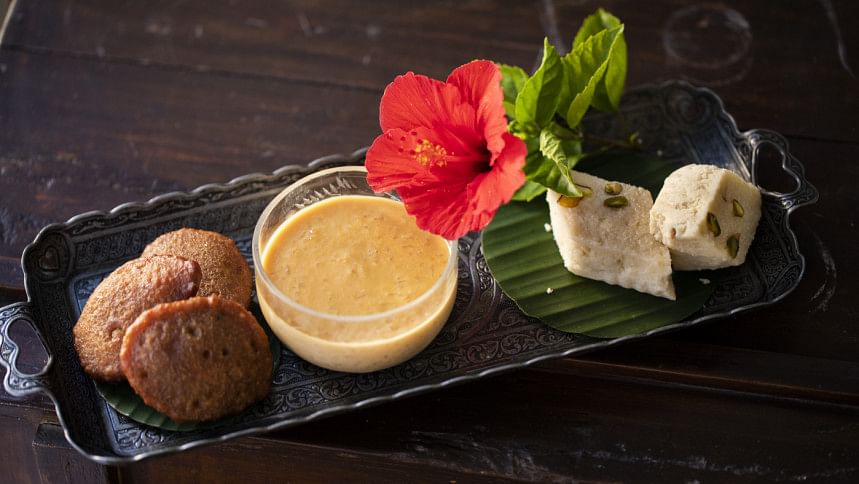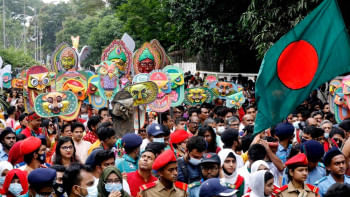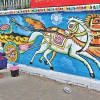Ushering Baishakh with mishty

Most Dhakaites have a sweet tooth. We just cannot do without a sweet end to our meals, be it licking your fingers on Kashmiri mango achar, tomato chutney, or slurping up the daal (lentil soup) mixed with sweet, jujube and tamarind pickle.
Many will say these are our everyday food habits, more akin to a lady's liking while men go for sweet curd with a tiny spoonful of rice — buffalo curd with crystals of nolen gur (liquid molasses). I will not debate the fact that come Baishakh, Eid, a birthday or an anniversary, (even a death) — sweets are what we all carry and sweets are what we all eat.
For many people, stealing extra nimkis (a kind of savoury puff with nigella seeds) and kalojam (a black sweetmeat with pink flesh inside) at milads has been a favourite childhood prank. Maybe because the two combined tasted the best. One of my friend's brothers, as a child, wanted to become an imam at a mosque just because of the sweets they got.

I used to see my mother make chhana by curdling milk with lemon juice. It was our standard evening snack — chhana sprinkled with raw sugar.
The difference between chhana and paneer depends on the technique of curdling the milk; non-melting farmer cheese (paneer) is hardened by adding other food acids. Chhana is soft, curdled milk when the green whey has been separated. This is the one used in most Bengali sweets like roshogolla, roshmalai, kacha chhana sandesh sprinkled with pistachio slivers and wrapped in a silver, fine-filigree foil sheet.

I can go on about all our regional specialities and sweet surprises from hundreds of unknown sweetshops tucked inside village bazaars – why, my favourite roshogolla is from Shree Durga Mistanna Bhandar, a store in Lohaganj, Halda Bazar. Nothing can beat the experience of gulping down a few of these bite-size hot roshogollas. Every single village bazaar in our country boasts one such local sweetshop.

To celebrate Baishakh in Dhaka, I stick to soft nolen gur coconut narus, khaja, goja, and labongo latika, which are beautifully wrapped and tucked with a clove pin.
Celebrating the coming of the Bangla New Year seems incomplete without seasonal favourites sold by street vendors — batasha, murali, etc. or homemade malpua (deshi pancakes drenched in syrup) and payesh (classic rice pudding). For Pahela Baishakh, mothers opt for a special version by using binni chal (sticky rice) and nolen gur.

With just a few days of Eid left and Baishakh coming up, we are set for a double-celebration this season.

Have a happy Bangla New Year and Eid Mubarak!

 For all latest news, follow The Daily Star's Google News channel.
For all latest news, follow The Daily Star's Google News channel. 









Comments